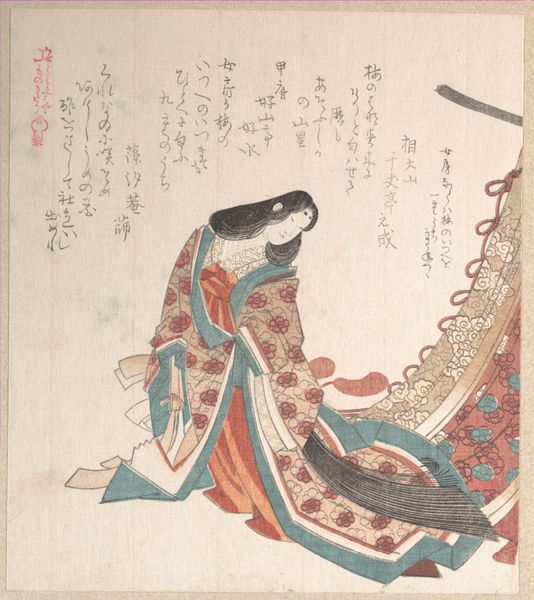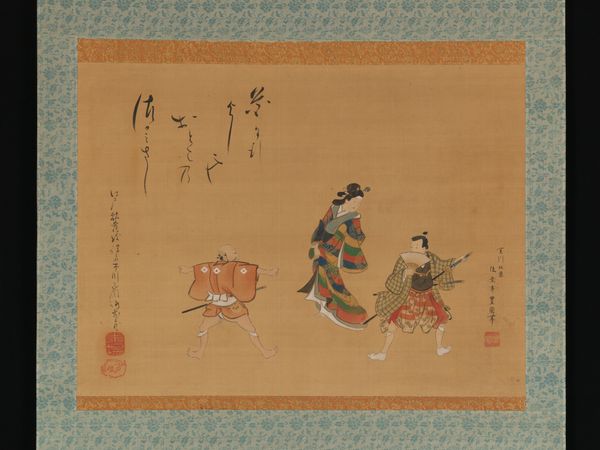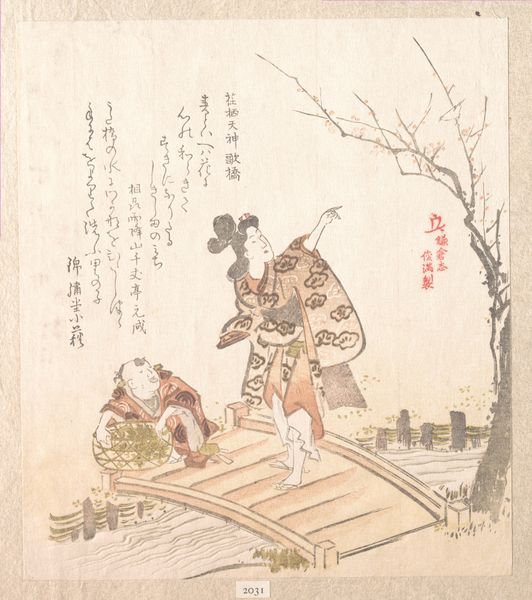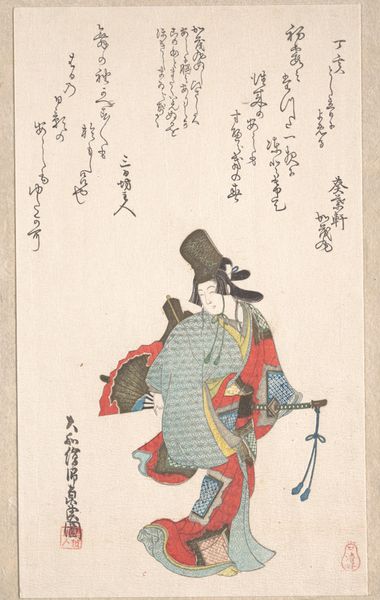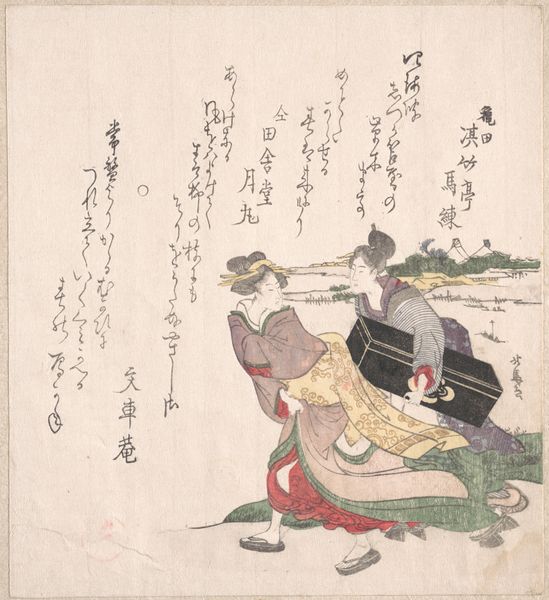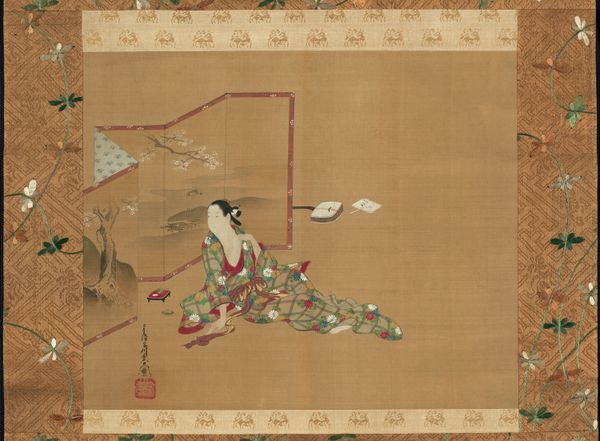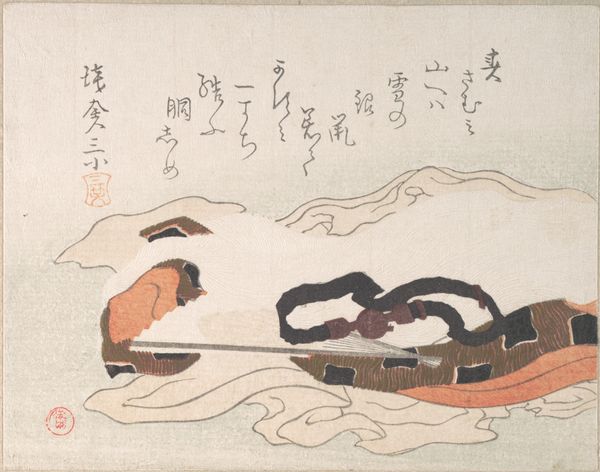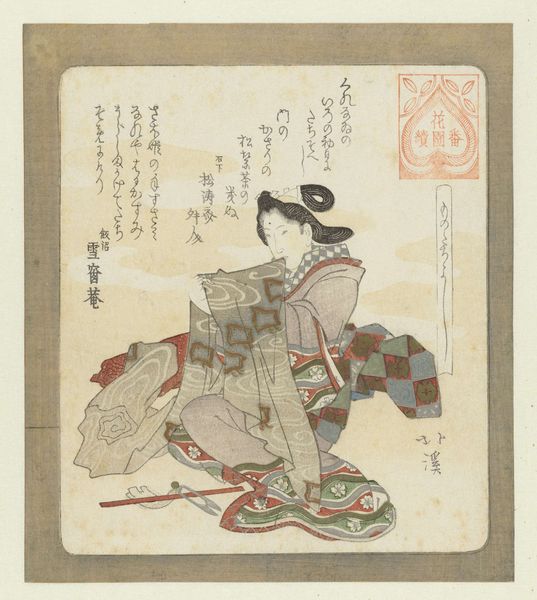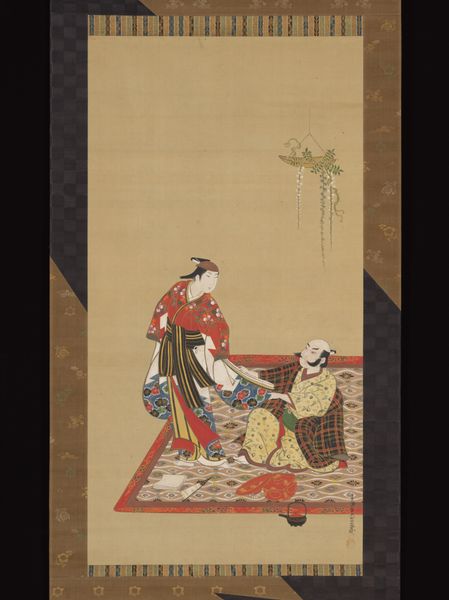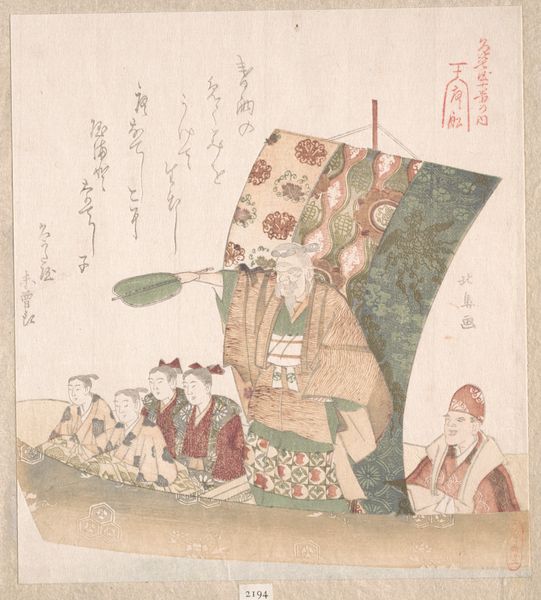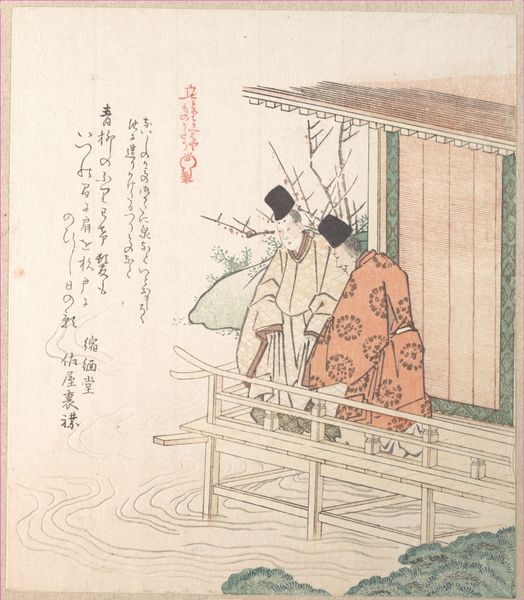
print, textile
# print
#
asian-art
#
landscape
#
textile
#
ukiyo-e
#
figuration
#
nude
Dimensions: Image: 14 1/2 in. × 21 in. (36.8 × 53.3 cm) Overall with mounting: 50 × 24 5/8 in. (127 × 62.5 cm) Overall with knobs: 50 × 27 3/16 in. (127 × 69 cm)
Copyright: Public Domain
Editor: Here we have "Enjoying the Cool Breeze," a Japanese print from sometime between 1615 and 1868. The woman's garments, especially the textiles used in the lower portion, are so elaborate, while the river looks almost flat. What strikes you most about this work? Curator: The print immediately draws my attention to the interplay of materials represented, from the woven tatami mat to the flowy textures and diverse textiles making up the garment and implied by the fan. We should consider the historical context. Who was producing these textiles? What social strata did such finely made materials signify in Edo-period Japan? Editor: That’s fascinating! It makes me rethink my initial interpretation, as simply being an intimate and aesthetic scene. What do you mean about implied production and materiality? Curator: Think about the act of creating these printed textiles, these are prints. How was the image transferred onto fabric? Was this solely the work of the artist, or many artisans involved in carving blocks and layering color? What impact would repeated commercial availability have had? Editor: That makes me consider the tension between ‘high art’ and commercialized, readily-available prints during the time, in the same way we see divisions in artistic approaches today. Curator: Precisely. The artist challenges traditional boundaries. Also, who would have purchased this artwork and for what price? It’s crucial to consider the audience, consumer, and the cycle of materiality and consumption it embodies. Does the art itself also represent someone who benefits from all that work that’s been done? Editor: I see your point. Focusing on the tangible production, the artistic labor, and the layers of manufacturing required to complete each piece sheds a whole new light on the cultural relevance of "Enjoying the Cool Breeze." Thank you! Curator: Avenues that enrich one’s appreciation. By examining materials and methods, we begin to decode this art on its historical and cultural level.
Comments
No comments
Be the first to comment and join the conversation on the ultimate creative platform.


